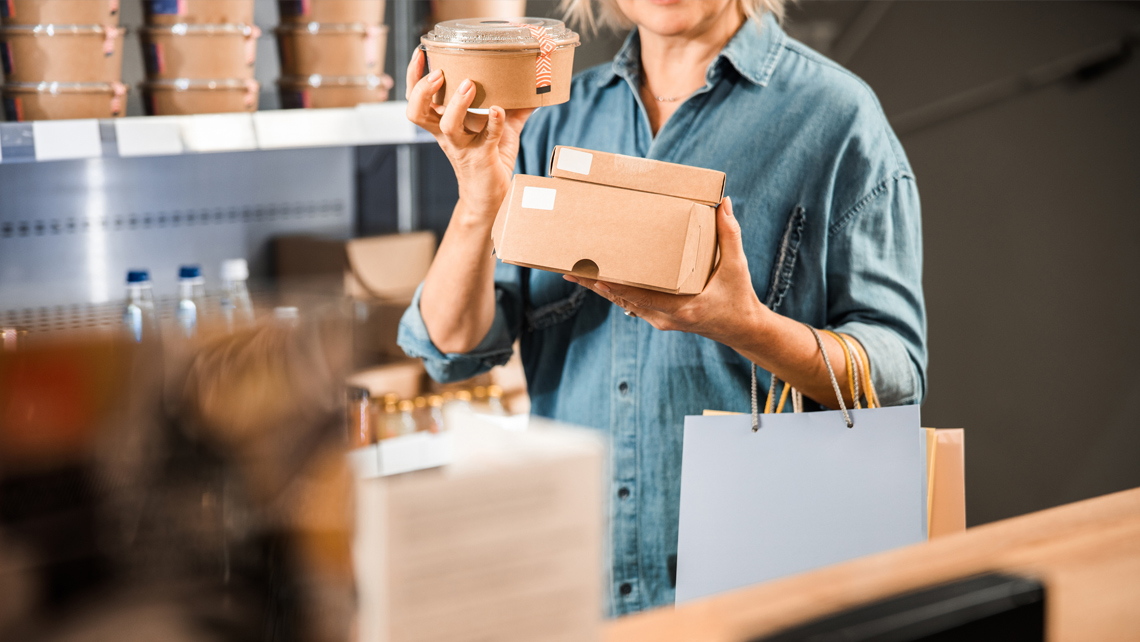1. Harmonizing food contact regulation
Whenever the safety of paper and board for food contact is discussed, the key challenge that everyone in the manufacturing chain is juggling with soon comes up: the absence of harmonized legislation that is specific for fiber-based food contact materials (FCM). The Plastics & Paper in contact with Foodstuff conference was no exception. Regulation gave rise to a lot of debate during the event. It became clear that the regulatory unclarity is even a disadvantage for fiber-based food packaging as demonstrating compliance continues to be more complex for paper and board than it is for plastic in contact with food.
It seems that the much-anticipated specific measures for paper and board for food contact won’t be available on European level any time soon. The EU Framework Regulation on Food Contact Material continues to form the legal basis for compliance in Europe. Guidelines by national risk assessment authorities, such as the substance list by the German BfR, have been widely adopted and are often taken as legally binding, but at the end of the day, are recommendations only. In addition, the BfR covers only a small part of all the substances that are used in manufacturing fiber-based packages.
Because of the situation, there are a lot of blurred lines when it comes to demonstrating compliance of paper and board for food contact. In many cases, the regulatory authorities are taking a step back and leaving the matter for the industry to solve. The activities taken to develop common compliance tools, such as CEPI’s recently updated Food Contact Guidelines that were also discussed at the conference, show that the industry is up for the task. But as long as there’s room for interpretation regarding compliance, ensuring access to substantial regulatory expertise should be a key focus area for operators in the fiber-based packaging value chain.
2. Open knowledge-sharing on NIAS
The lack of harmonized approach in demonstrating the safety of paper and board for food contact is particularly highlighted when discussing non-intentionally added substances (NIAS). The brand owners are under increased pressure to evaluate and manage the potential risks caused by NIAS migration in FCM materials. They hold the ultimate responsibility for food safety and are also the ones that would take the reputational – and financial – hit if food contamination happened. Yet, most of the information needed for exposure and risk assessment is beyond their reach, buried in the previous steps of the production chain.
A clear call for open knowledge-sharing and collaboration between all stakeholders was voiced in the brand owners’ presentations at the conference. Working in the Product Safety and Regulatory Affairs at Kemira, I recognize the challenge. As a chemicals supplier for the paper and board industry, we hold a lot of information that is relevant in managing NIAS and we work closely with our customers to ensure product safety on our part. But it is equally important for us to receive the information on the intended food contact application, for instance, to be able to reliably perform assessments on possible NIAS migration on the material.
Currently, EU enforces assessments on NIAS migration for food contact materials in the Framework Regulation, but e.g. regulated migration limits are not available for most of the substances. At the same time, as new test methods for non-intentionally added substances are being developed by the food industry and authorities alike, the number of NIAS detections is growing. The test and evaluation methods are missing for many substances, and as for the existing methods, only a part of them are standardized. The lack of uniform methods challenges consistency in demonstrating compliance and it puts a lot of emphasis on the chemical analytics expertise. It is crucial that the different operators of the value chain work together to develop the test and evaluation methods further.
3. Utilizing new sources of fiber for FCM
My third pick from the event topics has to do with the environmental impact of food contact materials. The current movement to find replacements for plastics in packaging means both opportunities and challenges for the paper and board packaging industry. How to keep up the packaging performance – meaning the ability to preserve food and thus also help minimize food waste – and ensure food safety when creating new food contact materials, e.g. new barrier solutions for fiber-based packaging?
In Europe, paper recycling rate reaches currently over 70% (EPRC). The concern about maintaining this good level while fiber-based packaging solutions for food develop further was expressed by many stakeholders at the conference. There was also a lot of talk about bio-based raw materials and especially the utilization of non-wood fibers in paper and board manufacturing. Both the non-wood fibers and the increased use of recycled content bring up the same question: are the materials safe to use for paper and board for food contact?
Maintaining high enough quality and cleanliness of the recycled fiber puts focus on the coatings and adhesives used in packaging. Although these substances make up only 5% of the packaging, they determine what happens to the remaining 95% of the fiber-based material. For the new, non-wood fibers, such as agricultural residues, the issues to overcome for food contact application have to do e.g. with securing constant stream of quality raw material that is homogenic and pure. A point that sometimes gets forgotten in these discussions for the future is that it takes a lot of time and effort – and yet again, solid value chain collaboration – to demonstrate food contact compliance to the authorities.
The Plastics & Paper in Contact with Foodstuff gathered over 200 experts from different parts of the food packaging industries, as well as regulatory agencies, legislators, and non-governmental organizations in Amsterdam in December 2019.
Want to learn more about compliance in fiber-based packaging? Watch our on-demand webinar.




